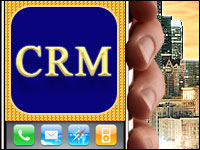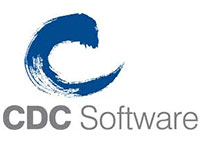
Without a doubt, mobile CRM has become a must-have deployment in the B2C world. Expect that trend to move into the B2B community for similar reasons: The devices are becoming ever more equipped to serve multiple needs, and their uses can soothe a lot of pain points.
B2B, more so than B2C, is highly sensitive to screen size and quality. Companies are in luck along those lines, said James Wong, CEO of Avidian Technologies.
Device screens, especially those on Android devices, continue to grow in size — the Samsung Galaxy Note being a prime example. “This will be aided by the growing popularity of tablets and the growth of trends such as BYOD and the consumerization of IT,” Wong told CRM Buyer.
More to the point is how this hardware is being put to use in the workforce — that is, employees tend to combine mobile devices and CRM in a consumption model as opposed to an input model.
“For example, prior to stepping into a sales meeting, they use their smartphone to retrieve important information about their client and the latest notes team members have recorded about them,” Wong said. “They’re able to quickly look at information such as past orders and any projected deals that are already in the works with them.”
In essence, with an effective mobile CRM application, a sales person no longer has to call into the office to get information from multiple people from different departments all about a single customer.
B2B Mobile Meets the Back End
B2B mobile CRM applications share another similarity to B2C deployments as well: Integrating this mobile piece to the back end can be deceptively complex, starting with the fact that now almost anyone in the enterprise can reach out via a mobile device to a business customer or partner.
Just five years ago, many businesses needed to have dedicated mobile workforces, such as sales people or service consultants in the field, observed Charles King, principal analyst with Pund-IT.
“Today, with the sophistication of tablets and smartphones, almost anyone can be part of the mobile workforce,” he told CRM Buyer. “You don’t have to be at the office to manage those critical relationships — you do it on the fly.”
Like B2C, B2B mobile CRM needs are being served by cloud vendors. If the fit is good, these firms should find the implementation relatively painless, Arke VP Chris Spears told CRM Buyer.
“Many of our clients are implementing cloud/hosted CRM systems that handle mobile aspects right out of the box — meaning nothing is changing for the organization’s infrastructure/mainframe,” he said.
However, for those clients that do implement a CRM system on their own infrastructure, there will be a number of concerns. Chief among these will be security, said Spears, especially locking down information stored locally on a mobile device should an employee lose it or leave the company.
Another common pitfall for a B2B mobile CRM deployment, noted King, is availability — or lack thereof.
“You don’t want a mobile solution that only works in a few places,” he pointed out. Resiliency of the network is another.
The Planning Piece
Infrastructure is only half the battle — and perhaps not the most important half at that. Issues such as availability and resilience are key to a B2C deployment. The consequences are more dire — or at least more embarrassing — if a mobile CRM app fails with a customer base.
“Customers expect mobile CRM to work,” John Lucker, principal for Deloitte’s Advanced Analytics and Modeling Sector, told CRM Buyer. “They don’t have the patience for explanations about bugs or glitches.”
Business partners and customers don’t either, but usually their patience can be found in greater supply, as they likely have the same issues themselves.
More critical for this group, though, is a mobile CRM app that does exactly what these companies need. Consumers can be forgiving if a mobile app — especially one that is free — delivers, say, 85 percent of the functionality they would like from a process.
To nail the planning piece, companies have to start with the basics, Lucker said, such as the strategic objective of the project.
“A lot of companies go in with a ‘tech first’ approach,” said Lucker. “They will just put a vendor’s package in. It is surprising how many companies don’t step back and ask, ‘strategically what are we trying to accomplish?’ Sometimes these applications get overly complex and tend to lead to functionality creep, so keeping things simple from a strategic and design perspective will accelerate value and ability to engage the user in most effective way.”
It’s wise to focus on “crunchy questions” — that is, problems that are core to the business, are challenging to solve, but have significant value if they can be solved, Lucker recommended.
Return on investment is also a factor to take into consideration when structuring a project, he said.
“There is a way to create a road map of short-to-medium term projects that use ROI funding from the previous project to create a financial stream to pay for these successive projects,” Lucker explained. “If it is done well, these projects can almost be self-funded.”

























































Nice post! After watching Dreamforce for the last couple days I AM definitely excited at the future capability of mobile CRM.